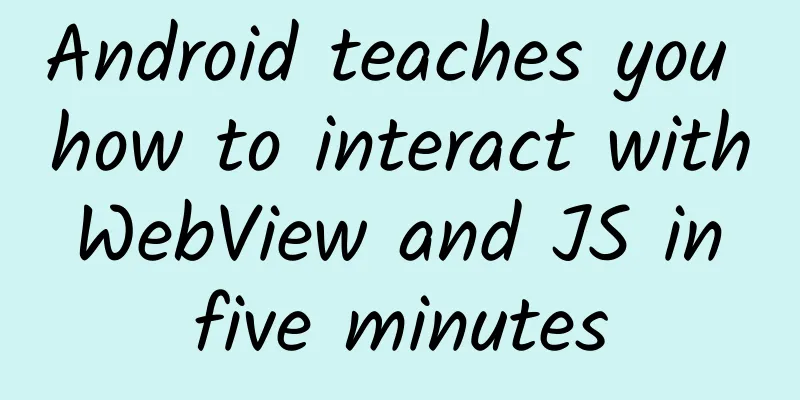Android teaches you how to interact with WebView and JS in five minutes

|
Background: Android API provides WebView component to realize HTML rendering. Now HTML5, CSS3, JS related development technology, and data exchange format json/XML. Skills of Web development engineers. In order to reduce excessive dependence on Android, some HTML is usually embedded in native Android. In this way, js data interaction is inevitable. We create a simple layout with only one webview control
We find this webView and load the local main.html, where main.html is stored in the assets root directory of the project file.
1.js calls Android method If you are careful, you should notice that there is a JSObject class above. Yes, this is the entry point, so that the front-end js can call the methods written on our Android side. The "aikaifa" can be understood as a mark, which can be changed to whatever you like. Let's take a look at the JSObject class:
This class defines the goBack method, which can be called by injecting JS. If you want to call the goBack method in js, you can call it like this: aikaifa.goBack(). In this way, the front end can easily call our Android methods. 2.Android calls JS method Since js can call our methods, we also call js methods For example, we want to call the getName method in js. We can write it like this.
The getName method is a method in js, and we can call the getTestJS method where needed. In this way, the interaction between WebView and js is roughly completed. [This article is an original article by 51CTO columnist "Hong Shengpeng". Please contact the original author for reprinting.] Click here to read more articles by this author |
<<: iOS AFNetworking framework HTTPS request configuration
Recommend
Inside iOS 9.3.5: A detailed look at the biggest vulnerability in iOS history
This morning, Apple suddenly released iOS 9.3.5. T...
You must know these 3 mainstream APP promotion methods!
In recent years, with the development and growth ...
What brand advantages are needed to use low-price strategies for marketing?
Many people believe that if the product has the s...
Will housing prices in Guangzhou fall in 2020? Guangzhou housing price forecast analysis
Will housing prices in Guangzhou fall in 2020? An...
Humans see the world with their eyes, but fish can "see the world" with their skin?
Produced by: Science Popularization China Author:...
Advertising cases in the automotive service industry!
In October this year, Shanghai's auto beauty ...
5 tips for brand marketing positioning!
There are many ways to position yourself, but the...
How to use Baidu experience for online promotion?
We all know that there are many ways of online pr...
How to create a Zhaoqing food ordering app? How much does it cost to develop a food ordering app?
The catering industry has become the first choice...
What information is needed to register a mini program? What information is needed to apply for a mini program?
Q: What information is needed to register the min...
Advertising and Marketing Case Analysis Skills
Looking at external cases is a basic skill for ma...
Say Goodbye to Singleness: When Love Knocks on the Door Baidu Cloud Download
Say Goodbye to Singleness: When Love Knocks on th...
Information flow methodology helps you reduce costs by 40%!
There are a lot of form leads, but few transactio...
The "Four-Hour Sleep Method"? Is it really reliable to imitate animals in sleeping?
"Turning around the red pavilion, lowering t...
Will constant coughing lead to pneumonia? It turns out that I have always misunderstood it! How to prevent pneumonia →
Myth: "If you keep coughing, you will cough ...









